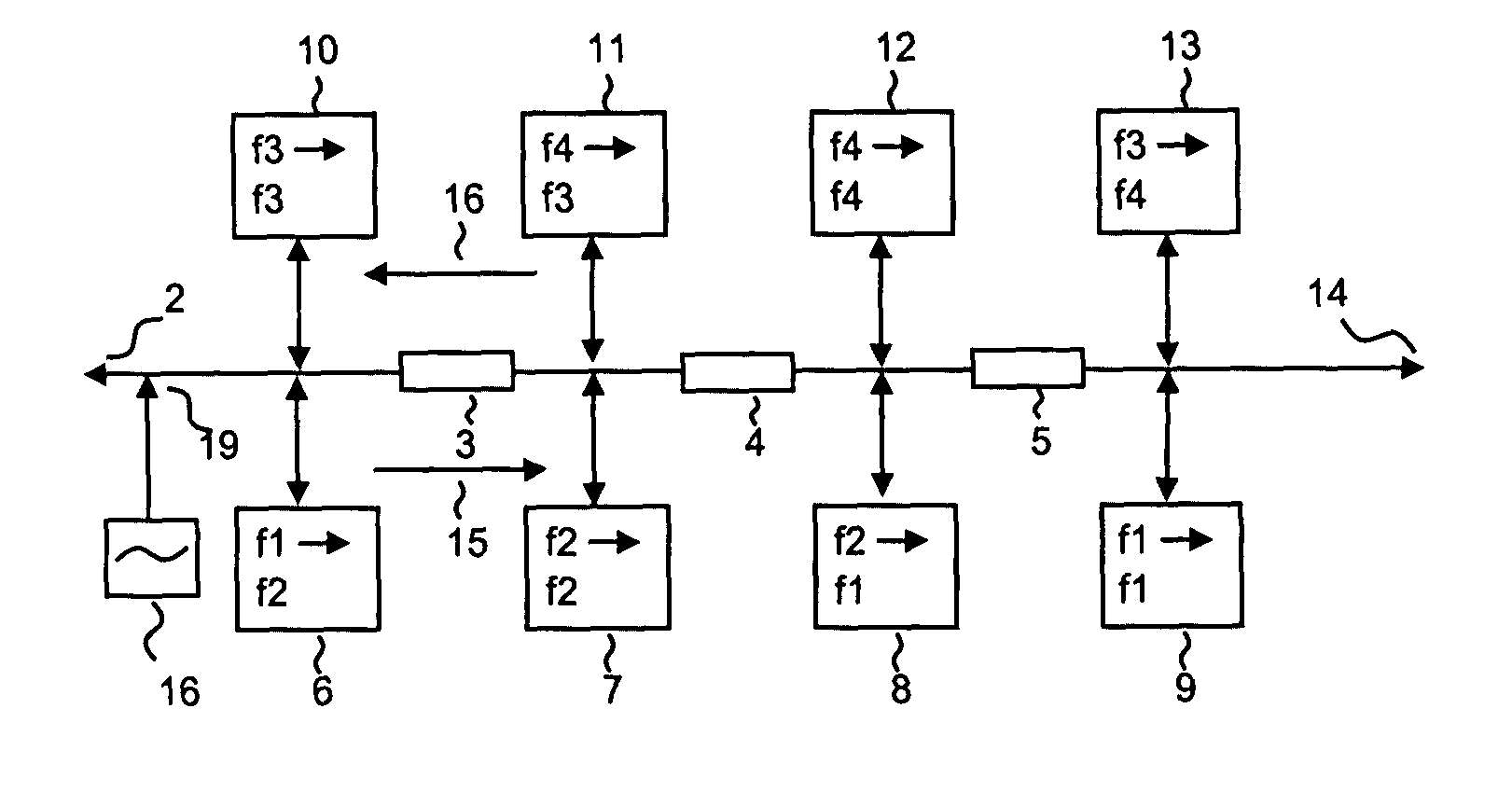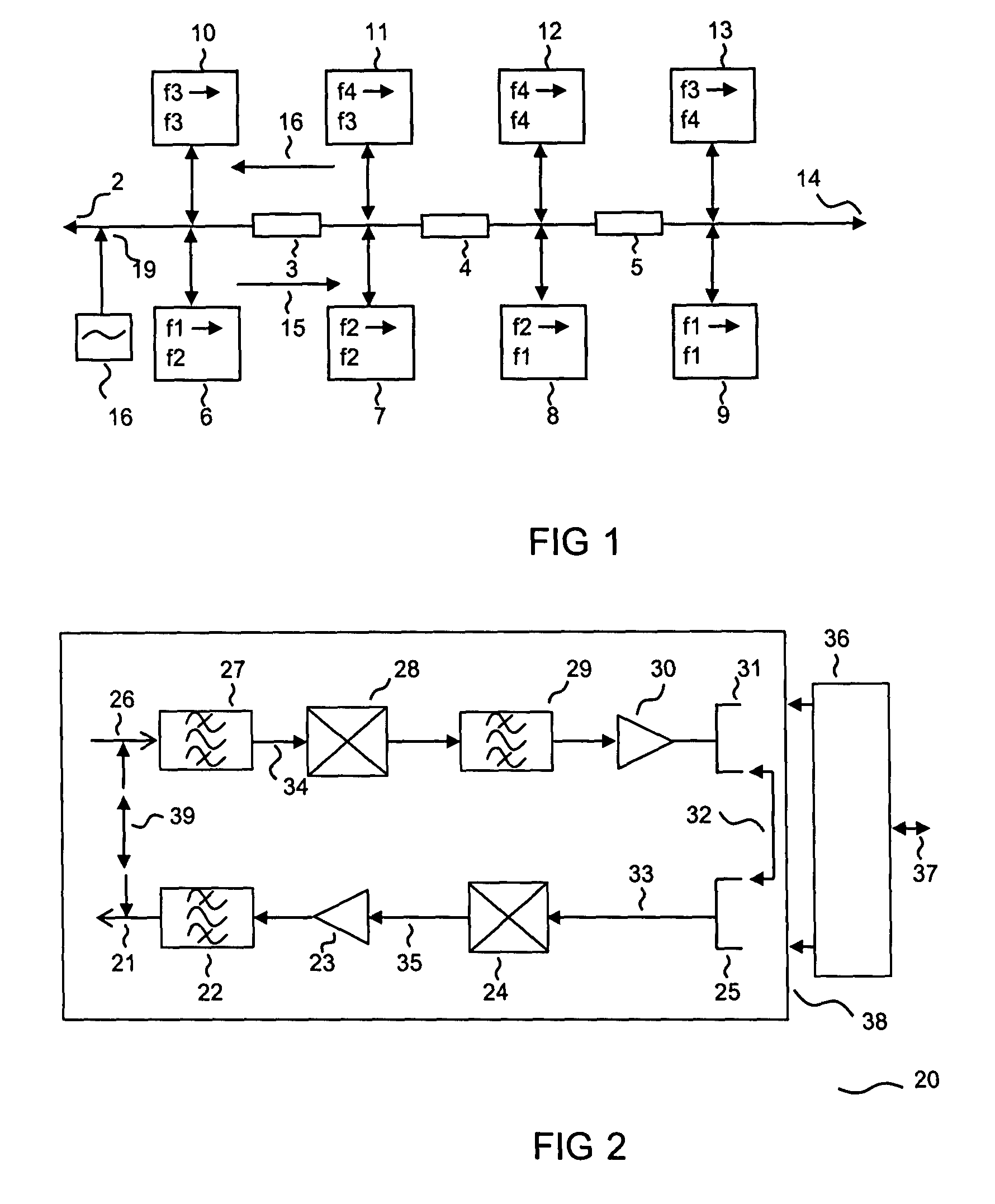Signal repeater system
a repeater and signal technology, applied in the field of signal repeater systems, can solve the problems of large physical dimensions, high supply current draw, and contribute to a substantial reduction of the overall bandwidth of the system
- Summary
- Abstract
- Description
- Claims
- Application Information
AI Technical Summary
Benefits of technology
Problems solved by technology
Method used
Image
Examples
Embodiment Construction
[0033]FIG. 1 illustrates how the invention in a repeater system 1 or a repeater cascade 1 makes use of frequency transposing repeaters where isolation against echo between repeaters is made redundant by the use of three frequency bands, f1, f2, f2 for each information channel, possibly each signal direction in use. The figure shows in more detail how the invention makes use of a repeater cascade 1 with the help of frequency transposing repeaters 6, 8 in combination with repeaters that amplifies within the same channel 7, 9 by applying only two frequency bands, f1 and f2 for on and the same information channel. This is achieved in a symmetrical system by repeater 6 frequency shifting from frequency f1 to f2. The nest repeater 7 repeats the signal within the same frequency band, f2. The next repeater 8 repeats by frequency shifting to f1. Further on the sequence is repeated starting with the subsequent attenuation 5 and repeater 9. In this way echo for example into one repeater 6 from...
PUM
 Login to View More
Login to View More Abstract
Description
Claims
Application Information
 Login to View More
Login to View More - R&D
- Intellectual Property
- Life Sciences
- Materials
- Tech Scout
- Unparalleled Data Quality
- Higher Quality Content
- 60% Fewer Hallucinations
Browse by: Latest US Patents, China's latest patents, Technical Efficacy Thesaurus, Application Domain, Technology Topic, Popular Technical Reports.
© 2025 PatSnap. All rights reserved.Legal|Privacy policy|Modern Slavery Act Transparency Statement|Sitemap|About US| Contact US: help@patsnap.com



